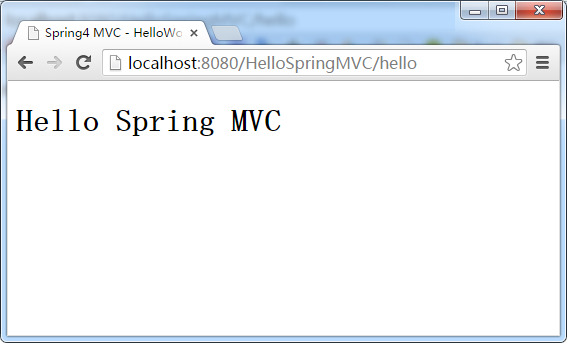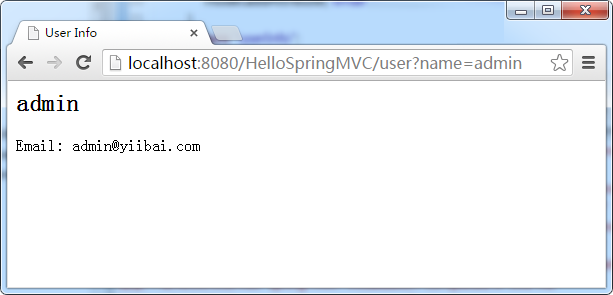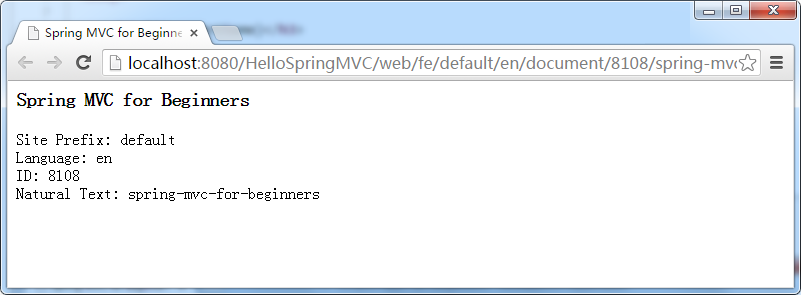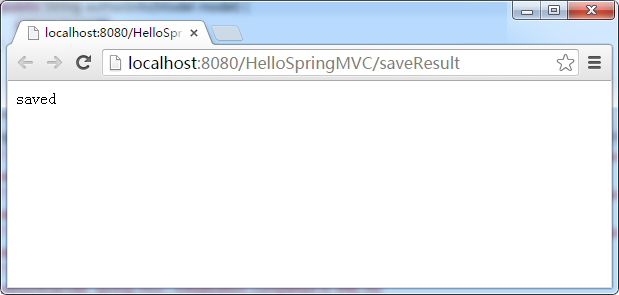Spring4 MVC入門教學
本教程是基於以下工具寫的:
- MyEclipse 10
- Spring 4.0.3.RELEASE
2- 預覽應用程式執行流程
Spring MVC DispatcherServlet 讀取 xml 配置檔的原則:
-
{servlet-name} ==> /WEB-INF/{servlet-name}-servlet.xml

如果你不想用 SpringMVC 的使用原則,可以重新配置 SpringMVC DispatcherServlet 在 web.xml 檔中:
<servlet>
<servlet-name>my-dispatcher-name</servlet-name>
<servlet-class>org.springframework.web.servlet.DispatcherServlet</servlet-class>
<init-param>
<!-- override default name {servlet-name}-servlet.xml -->
<param-name>contextConfigLocation</param-name>
<param-value>/WEB-INF/springmvc-myconfig.xml</param-value>
</init-param>
<load-on-startup>1</load-on-startup>
</servlet>
應用程式的流程:
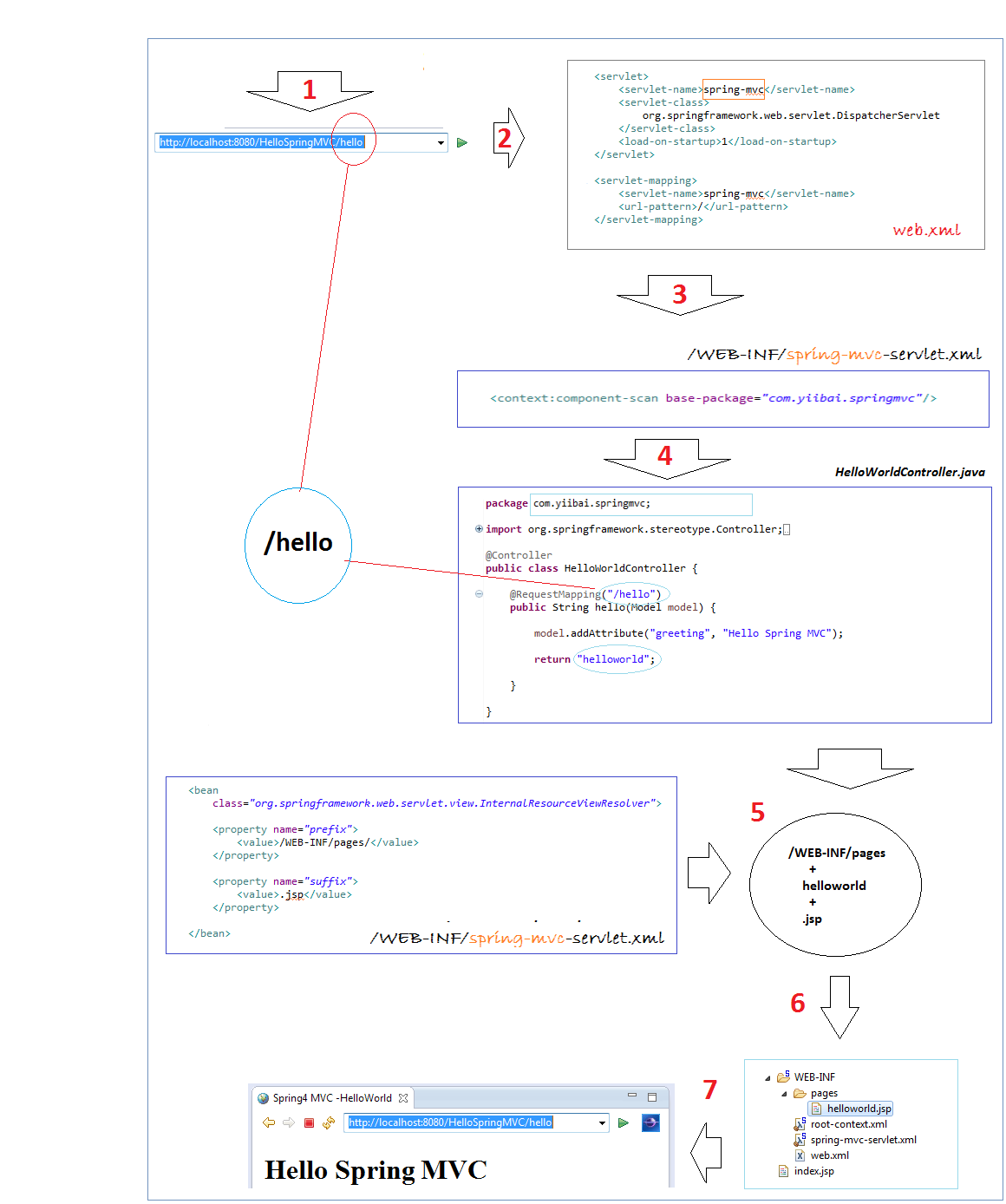

3 - 創建Maven工程
創建Maven專案類型。 Maven是幫助我們管理庫的最好方式。
在 Eclipse, 選擇 "File/New/Other..."
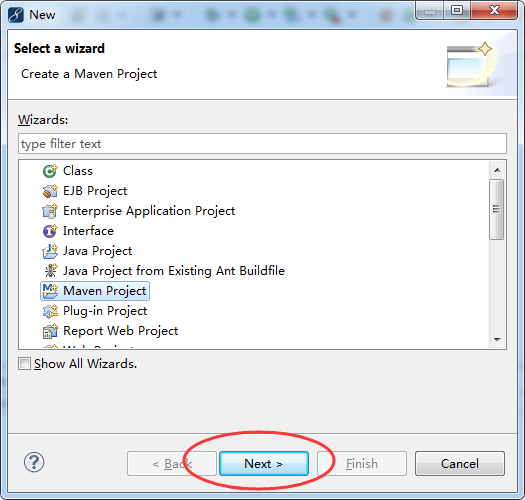



選擇 archetype "maven-archetype-webapp"。
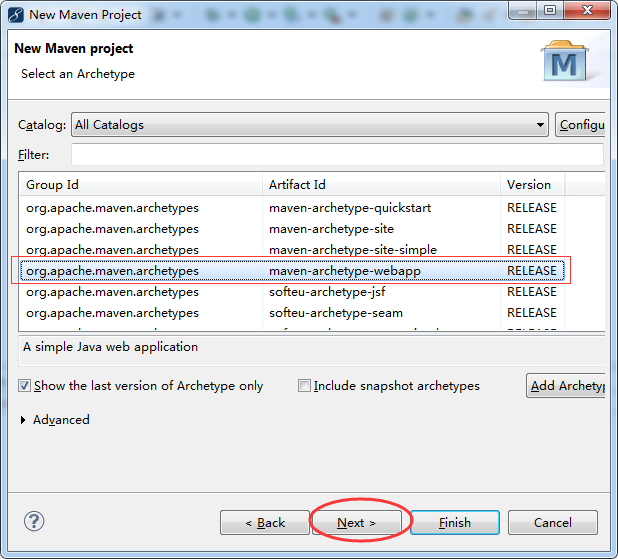

輸入:
- Group Id: com.zaixian
- Artifact Id: HelloSpringMVC
- Package: com.zaixian.springmvc

這樣將創建專案,結構如下圖所示:
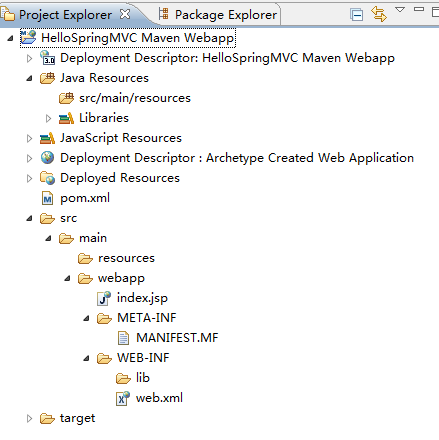
不要擔心專案在創建的時候出現錯誤資訊。原因是,現在我們還沒有聲明 Servlet 庫。
在 Eclipse 中創建 Maven 專案結構可能是錯誤的。需要我們去檢查出來並完善。


4- 配置Spring
這是專案建成後的檔結構圖:


配置 Maven 使用 Spring 庫.
- pom.xml
<projectxmlns="http://maven.apache.org/POM/4.0.0"xmlns:xsi="http://www.w3.org/2001/XMLSchema-instance"
xsi:schemaLocation="http://maven.apache.org/POM/4.0.0
http://maven.apache.org/maven-v4_0_0.xsd">
<modelVersion>4.0.0</modelVersion>
<groupId>com.zaixian</groupId>
<artifactId>HelloSpringMVC</artifactId>
<packaging>war</packaging>
<version>0.0.1-SNAPSHOT</version>
<name>HelloSpringMVC Maven Webapp</name>
<url>http://maven.apache.org</url>
<dependencies>
<dependency>
<groupId>junit</groupId>
<artifactId>junit</artifactId>
<version>3.8.1</version>
<scope>test</scope>
</dependency>
<!-- Servlet Library -->
<!-- http://mvnrepository.com/artifact/javax.servlet/javax.servlet-api -->
<dependency>
<groupId>javax.servlet</groupId>
<artifactId>javax.servlet-api</artifactId>
<version>3.1.0</version>
<scope>provided</scope>
</dependency>
<!-- Spring dependencies -->
<!-- http://mvnrepository.com/artifact/org.springframework/spring-core -->
<dependency>
<groupId>org.springframework</groupId>
<artifactId>spring-core</artifactId>
<version>4.1.4.RELEASE</version>
</dependency>
<!-- http://mvnrepository.com/artifact/org.springframework/spring-web -->
<dependency>
<groupId>org.springframework</groupId>
<artifactId>spring-web</artifactId>
<version>4.1.4.RELEASE</version>
</dependency>
<!-- http://mvnrepository.com/artifact/org.springframework/spring-webmvc -->
<dependency>
<groupId>org.springframework</groupId>
<artifactId>spring-webmvc</artifactId>
<version>4.1.4.RELEASE</version>
</dependency>
</dependencies>
<build>
<finalName>HelloSpringMVC</finalName>
<plugins>
<!-- Config: Maven Tomcat Plugin -->
<!-- http://mvnrepository.com/artifact/org.apache.tomcat.maven/tomcat7-maven-plugin -->
<plugin>
<groupId>org.apache.tomcat.maven</groupId>
<artifactId>tomcat7-maven-plugin</artifactId>
<version>2.2</version>
<!-- Config: contextPath and Port (Default - /HelloSpringMVC : 8080) -->
<!--
<configuration>
<path>/</path>
<port>8899</port>
</configuration>
-->
</plugin>
</plugins>
</build>
</project>
配置 web.xml:
<web-app xmlns:xsi="http://www.w3.org/2001/XMLSchema-instance"
xmlns="http://java.sun.com/xml/ns/javaee"
xsi:schemaLocation="http://java.sun.com/xml/ns/javaeehttp://java.sun.com/xml/ns/javaee/web-app_3_0.xsd"
id="WebApp_ID" version="3.0">
<display-name>HelloWorldSpring</display-name>
<servlet>
<servlet-name>spring-mvc</servlet-name>
<servlet-class>
org.springframework.web.servlet.DispatcherServlet
</servlet-class>
<load-on-startup>1</load-on-startup>
</servlet>
<servlet-mapping>
<servlet-name>spring-mvc</servlet-name>
<url-pattern>/</url-pattern>
</servlet-mapping>
<!-- Other XML Configuration -->
<!-- Load by Spring ContextLoaderListener -->
<context-param>
<param-name>contextConfigLocation</param-name>
<param-value>/WEB-INF/root-context.xml</param-value>
</context-param>
<!-- Spring ContextLoaderListener -->
<listener>
<listener-class>org.springframework.web.context.ContextLoaderListener</listener-class>
</listener>
</web-app>
-
{servlet-name} ==> /WEB-INF/{servlet-name}-servlet.xml

- spring-mvc-servlet.xml
<?xml version="1.0"encoding="UTF-8"?>
<beans xmlns="http://www.springframework.org/schema/beans"
xmlns:xsi="http://www.w3.org/2001/XMLSchema-instance"
xmlns:p="http://www.springframework.org/schema/p"
xmlns:context="http://www.springframework.org/schema/context"
xmlns:mvc="http://www.springframework.org/schema/mvc"
xsi:schemaLocation="http://www.springframework.org/schema/beans
http://www.springframework.org/schema/beans/spring-beans-4.1.xsd
http://www.springframework.org/schema/context
http://www.springframework.org/schema/context/spring-context-4.1.xsd
http://www.springframework.org/schema/mvc
http://www.springframework.org/schema/mvc/spring-mvc-4.1.xsd">
<context:component-scan base-package="com.zaixian.tutorial.springmvc"/>
<context:annotation-config/>
<bean
class="org.springframework.web.servlet.view.InternalResourceViewResolver">
<property name="prefix">
<value>/WEB-INF/pages/</value>
</property>
<property name="suffix">
<value>.jsp</value>
</property>
</bean>
</beans>
在Spring應用程式 ContextLoaderListener 將讀取其他 XML 配置檔(如下的 abc.xml 和 root-context.xml 兩個檔)。 可能不需要配置 ContextLoaderListener,如果你的應用程式並不需要讀取其他XML配置檔。
<!-- web.xml -->
<!-- Spring ContextLoaderListener -->
<listener>
<listener-class>org.springframework.web.context.ContextLoaderListener</listener-class>
</listener>
<!-- Load by Spring ContextLoaderListener -->
<context-param>
<param-name>contextConfigLocation</param-name>
<param-value>
/WEB-INF/root-context.xml,
/WEB-INF/abc.xml
</param-value>
</context-param>
- /WEB-INF/root-context.xml
<?xml version="1.0" encoding="UTF-8"?> <beans xmlns="http://www.springframework.org/schema/beans" xmlns:xsi="http://www.w3.org/2001/XMLSchema-instance" xsi:schemaLocation="http://www.springframework.org/schema/beans http://www.springframework.org/schema/beans/spring-beans.xsd"> <!-- Empty --> </beans>
- HelloWorldController.java
package com.zaixian.springmvc;
import org.springframework.stereotype.Controller;
import org.springframework.ui.Model;
import org.springframework.web.bind.annotation.RequestMapping;
@Controller
public class HelloWorldController {
@RequestMapping("/hello")
public String hello(Model model) {
model.addAttribute("greeting", "Hello Spring MVC");
return"helloworld";
}
}
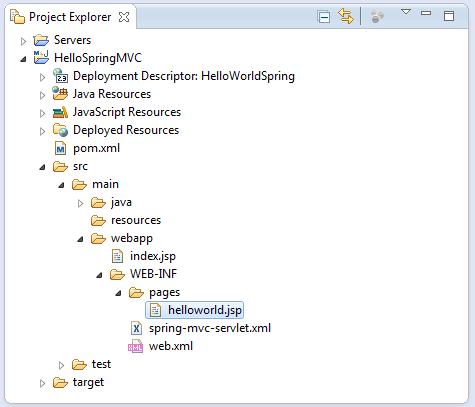
- helloworld.jsp
<%@ page language="java" contentType="text/html; charset=UTF-8" pageEncoding="UTF-8"%>
<!DOCTYPE html PUBLIC "-//W3C//DTD HTML 4.01 Transitional//EN" "http://www.w3.org/TR/html4/loose.dtd">
<html>
<head>
<meta http-equiv="Content-Type" content="text/html; charset=UTF-8">
<title>Spring4 MVC -HelloWorld</title>
</head>
<body>
<h1>${greeting}</h1>
</body>
</html>
5- 運行Spring應用程式
首先,運行應用程式之前,需要構建整個專案。
右鍵單擊該專案並選擇:
- Run As/Maven install
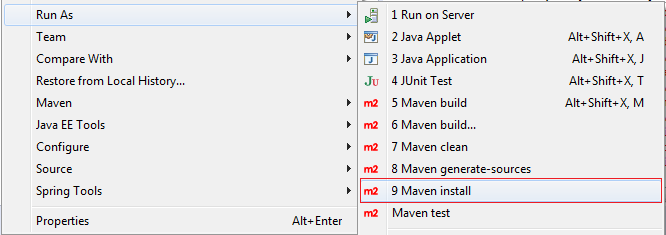

運行配置:


運行配置:


輸入:
- Name: Run HelloSpringMVC
- Base directory: ${workspace_loc:/HelloSpringMVC} =>${workspace_loc:/HelloSpringMVC Maven Webapp}
- Goals: tomcat7:run
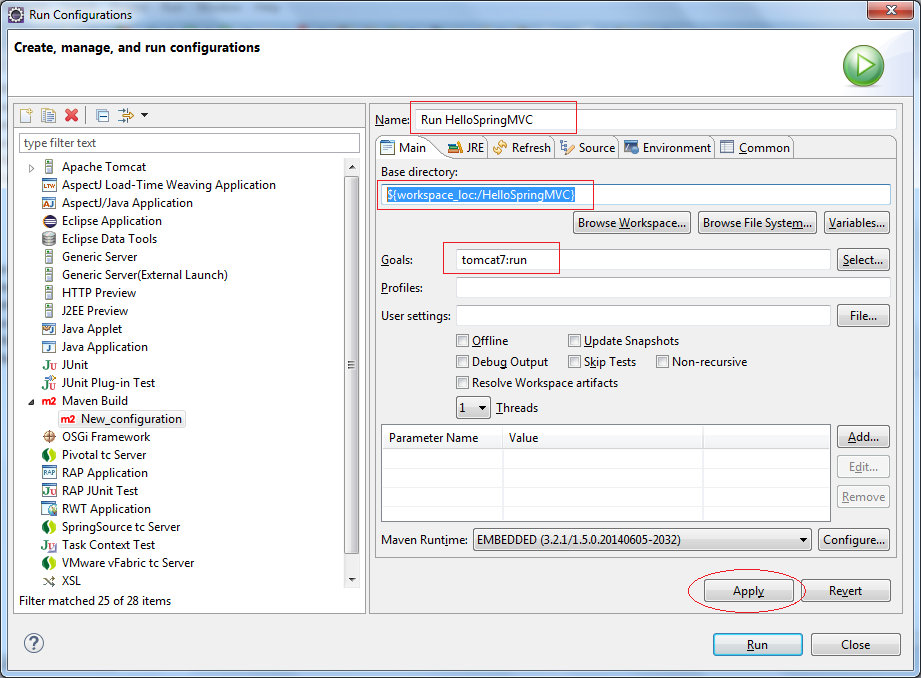
點擊Run:
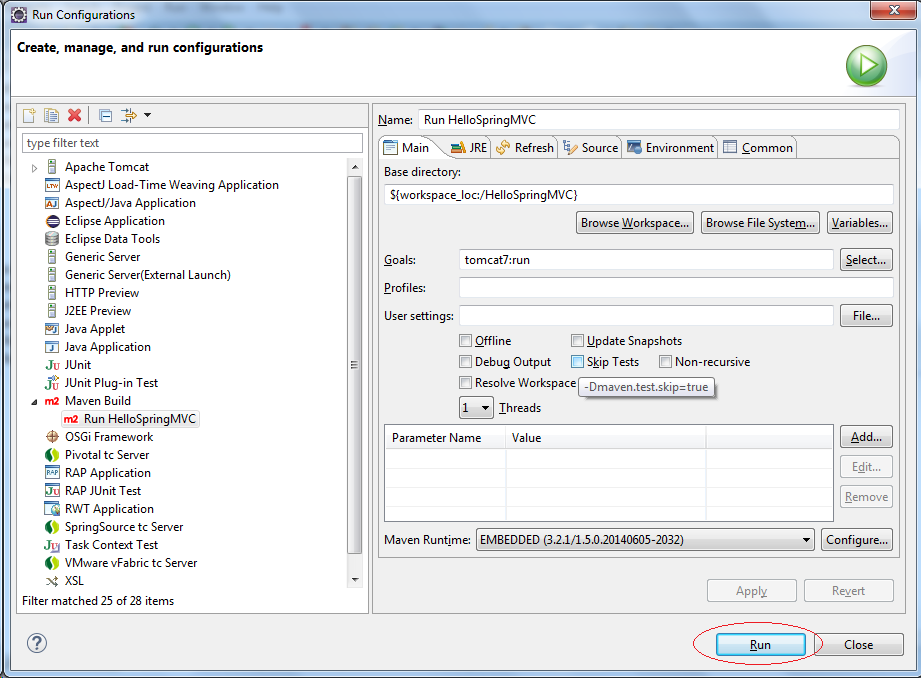
第一次運行該程式將需要幾分鐘(看你的網速),它需要下載 Tomcat 插件庫才能運行。
一切準備就緒:


運行URL,如下圖:
6 - 應用程式的流程
完成您的專案後,並成功地在上一步中運行。現在,我們來看一看程式的運行方式。


7- 控制器和方法
7.1- HttpServletRequest & HttpServletResponse
可以使用 HttpServletRequest, HttpServletResponse 在控制器的方法中。
- OtherExampleController.java
package com.zaixian.springmvc;
import javax.servlet.http.HttpServletRequest;
import javax.servlet.http.HttpServletResponse;
import org.springframework.stereotype.Controller;
import org.springframework.ui.Model;
import org.springframework.web.bind.annotation.PathVariable;
import org.springframework.web.bind.annotation.RequestMapping;
import org.springframework.web.bind.annotation.RequestParam;
@Controller
public class OtherExampleController {
......
@RequestMapping("/somePath")
public String requestResponseExample(HttpServletRequest request,
HttpServletResponse reponses, Model model) {
// Todo something here
return "someView";
}
......
}
7.2- 控制器中的重定向
使用首碼 "redirect:" ,該方法返回字串,可以重定向到另一頁面。參見圖:
- RedirectExampleController.java
package com.zaixian.springmvc;
import org.springframework.stereotype.Controller;
import org.springframework.ui.Model;
import org.springframework.web.bind.annotation.RequestMapping;
import org.springframework.web.bind.annotation.RequestMethod;
@Controller
public class RedirectExampleController {
@RequestMapping(value = "/redirect", method = RequestMethod.GET)
public String authorInfo(Model model) {
// Do somethong here
return "redirect:/hello";
}
}
運行URL:
7.3- @RequestParam示例
使用@RequestParam 注解將請求參數綁定到你的控制器方法參數。
下麵的代碼片段顯示了這個用法:
- RequestParamExampleController.java
package com.zaixian.springmvc;
import org.springframework.stereotype.Controller;
import org.springframework.ui.Model;
import org.springframework.web.bind.annotation.RequestMapping;
import org.springframework.web.bind.annotation.RequestParam;
@Controller
public class RequestParamExampleController {
@RequestMapping("/user")
public String userInfo(Model model,
@RequestParam(value = "name", defaultValue = "Guest") String name) {
model.addAttribute("name", name);
if("admin".equals(name)) {
model.addAttribute("email", "admin@xuhuhu.com");
} else{
model.addAttribute("email", "Not set");
}
return "userInfo";
}
}
- /WEB-INF/pages/userInfo.jsp
<html>
<head>
<meta http-equiv="Content-Type" content="text/html; charset=utf-8">
<title>User Info</title>
</head>
<body>
<h2>${name}</h2>
Email: ${email}
<br>
</body>
</html>
運行 URL:
7.4- @PathVariable示例
在Spring MVC中,可以使用@PathVariable注釋將一個方法參數綁定到一個URI範本變數的值:
例如,這是一個範本的URI:
- /web/fe/{sitePrefix}/{language}/document/{id}/{naturalText}
而下麵的 URI 範本匹配上面:
- /web/fe/default/en/document/8108/spring-mvc-for-beginners
- /web/fe/default/vi/document/8108/spring-mvc-cho-nguoi-moi-bat-dau
- .....

下麵的代碼片段顯示了用法:
- PathVariableExampleController.java
package com.zaixian.springmvc;
import org.springframework.stereotype.Controller;
import org.springframework.ui.Model;
import org.springframework.web.bind.annotation.PathVariable;
import org.springframework.web.bind.annotation.RequestMapping;
@Controller
public class PathVariableExampleController {
/**
* @PathVariable Example:
*
*/
@RequestMapping("/web/fe/{sitePrefix}/{language}/document/{id}/{naturalText}")
public String documentView(Model model,
@PathVariable(value = "sitePrefix") String sitePrefix,
@PathVariable(value = "language") String language,
@PathVariable(value = "id") Long id,
@PathVariable(value = "naturalText") String naturalText) {
model.addAttribute("sitePrefix", sitePrefix);
model.addAttribute("language", language);
model.addAttribute("id", id);
model.addAttribute("naturalText", naturalText);
String documentName = "Java tutorial for Beginners";
if(id == 8108) {
documentName = "Spring MVC for Beginners";
}
model.addAttribute("documentName", documentName);
return "documentView";
}
}
- /WEB-INF/pages/documentView.jsp
<html>
<head>
<meta http-equiv="Content-Type" content="text/html; charset=utf-8">
<title>${documentName}</title>
</head>
<body>
<h3>${documentName}</h3>
Site Prefix: ${sitePrefix}
<br> Language: ${language}
<br> ID: ${id}
<br> Natural Text: ${naturalText}
<br>
</body>
</html>
運行 URL:
7.5- @ResponseBody示例
如果您使用 @ResponseBody 注釋到方法, spring 將嘗試轉換它的返回值,並自動寫入到HTTP回應。在這種情況下,並不需要一個特定的視圖。
注:方法不一定需要返回字串類型。
使用@ResponseBody和方法返回字串的簡單例子。
- ResponseBodyExample1Controller.java
package com.zaixian.springmvc;
import org.springframework.stereotype.Controller;
import org.springframework.ui.Model;
import org.springframework.web.bind.annotation.RequestMapping;
import org.springframework.web.bind.annotation.ResponseBody;
@Controller
public class ResponseBodyExample1Controller {
// Simple example, method returns String.
@RequestMapping(value = "/saveResult")
@ResponseBody
publicString authorInfo(Model model) {
return "saved";
}
}
運行示例的結果:
使用@ResponseBody 的一個例子,方法返回一個對象。
代碼下載:http://pan.baidu.com/s/1mgYKoA0
上一篇:
下一篇:
Spring4 MVC HelloWorld 注解和JavaConfig實例

